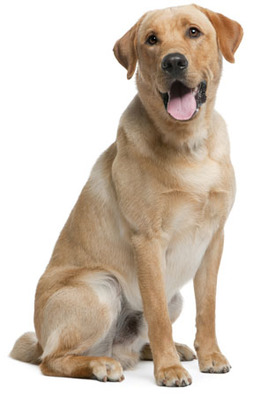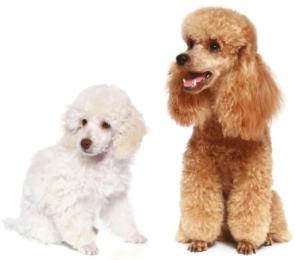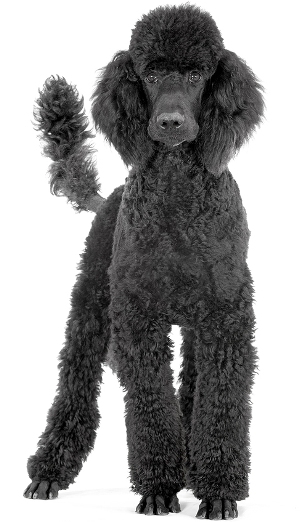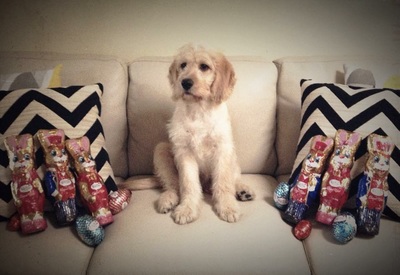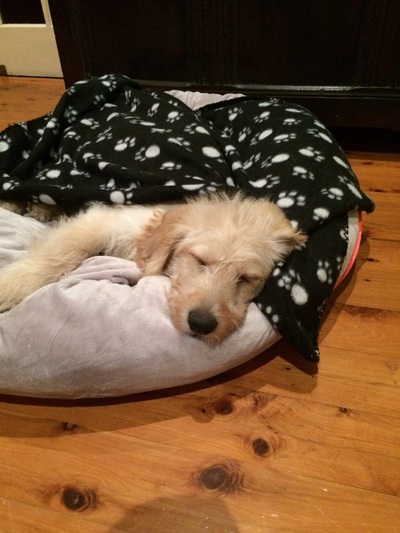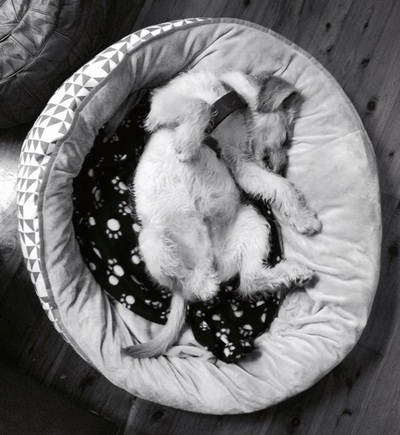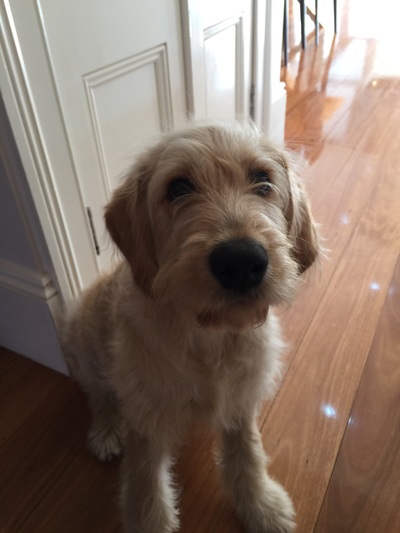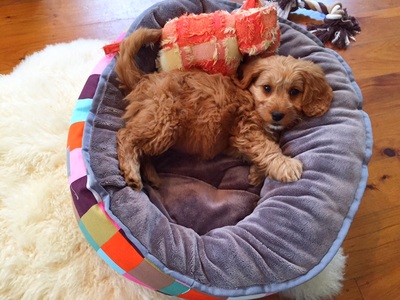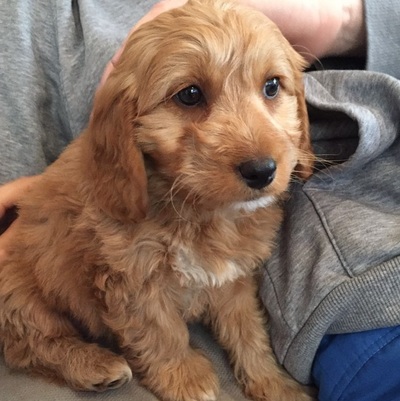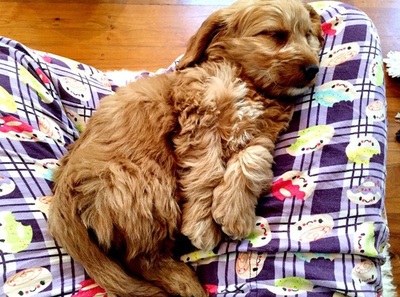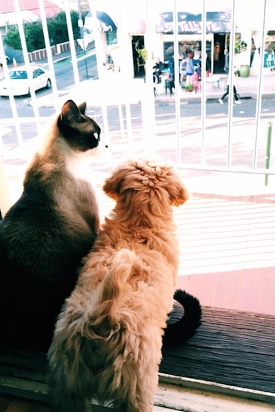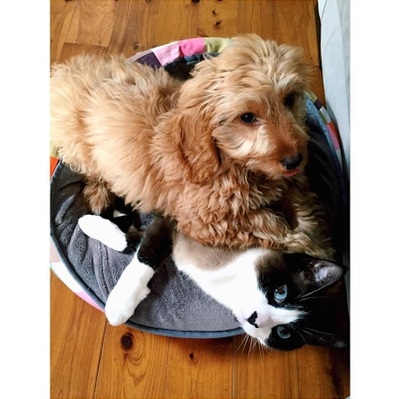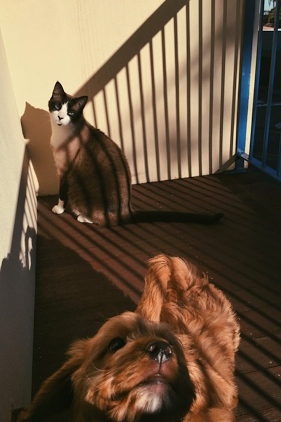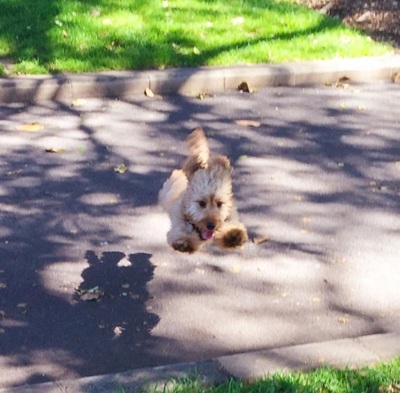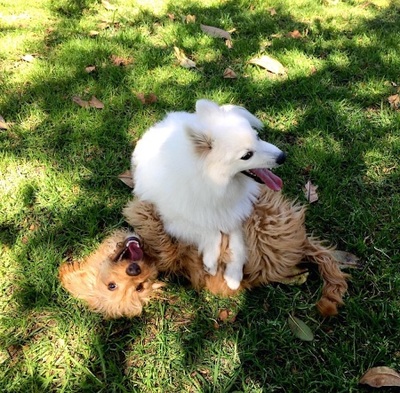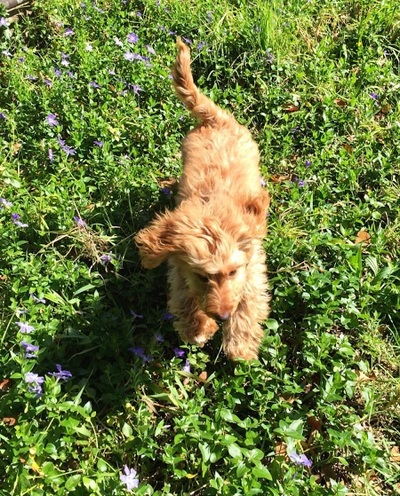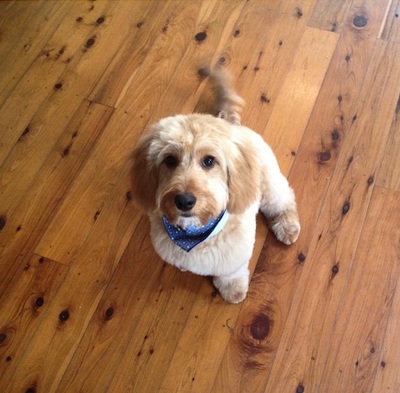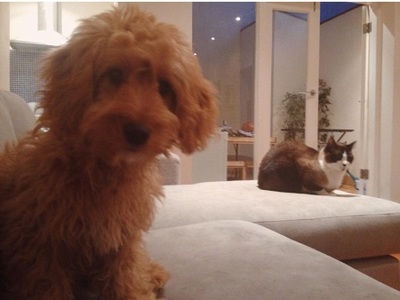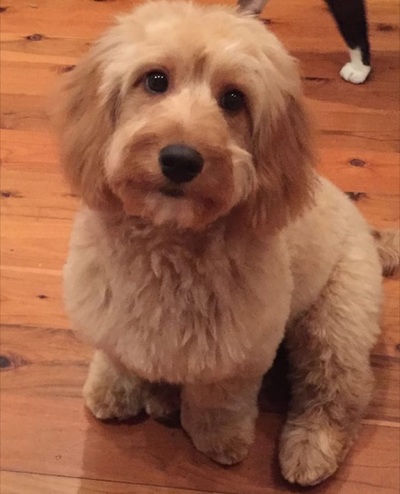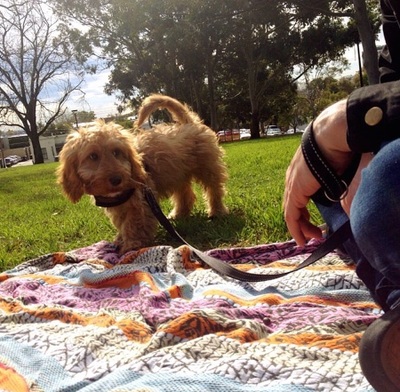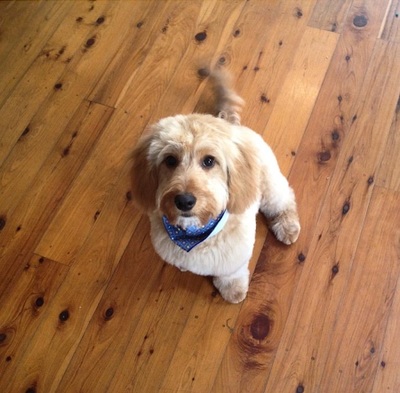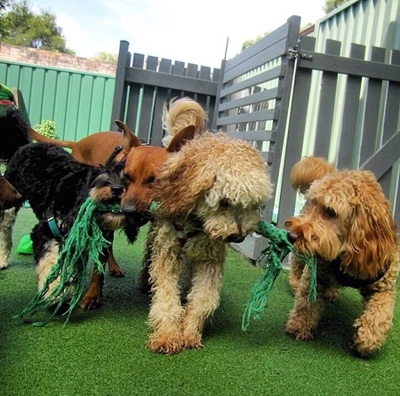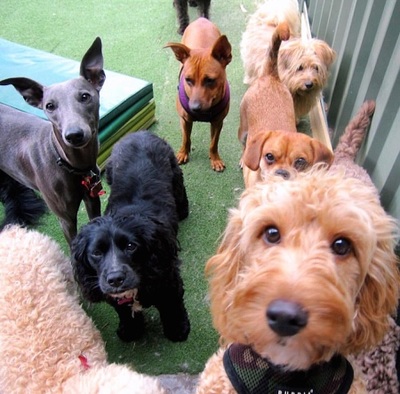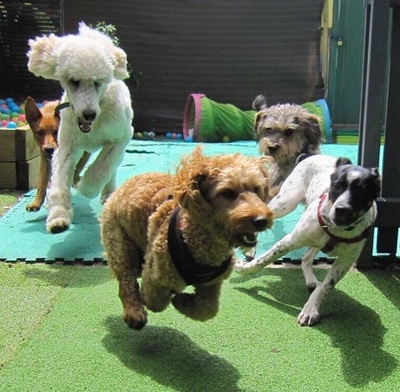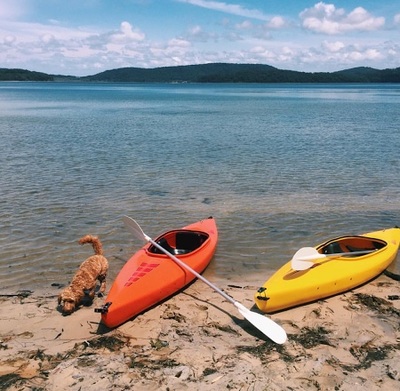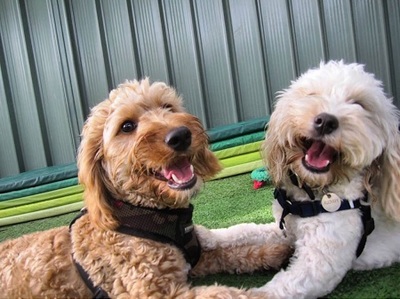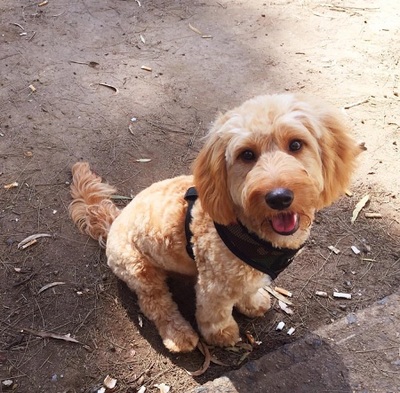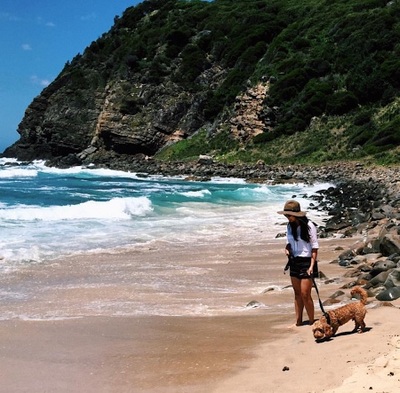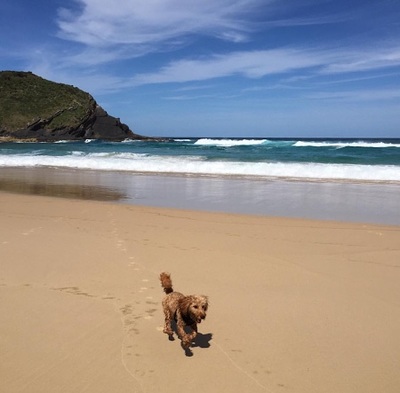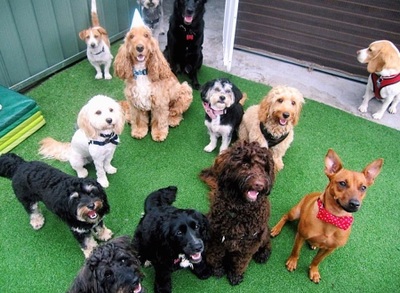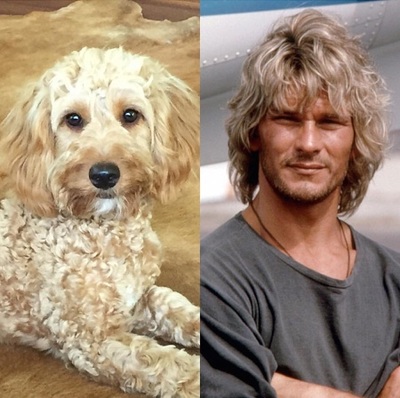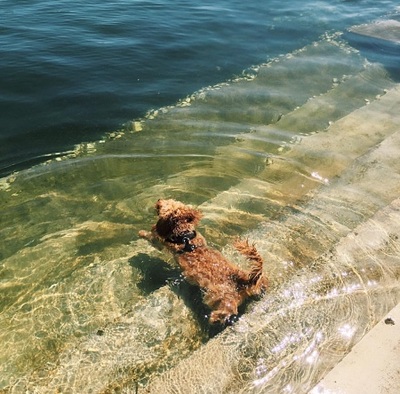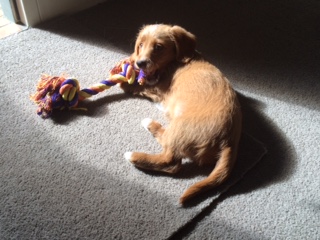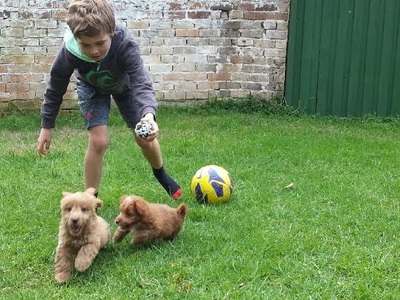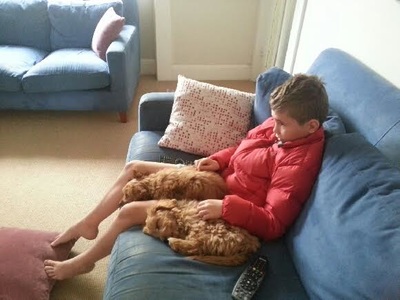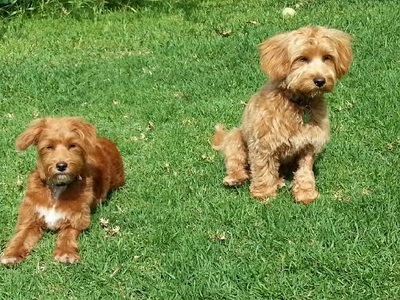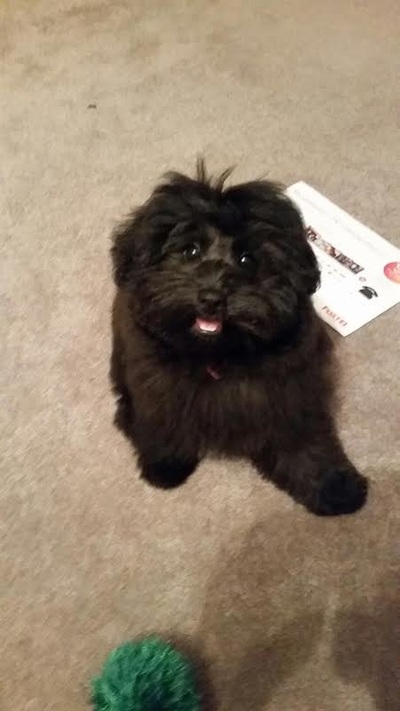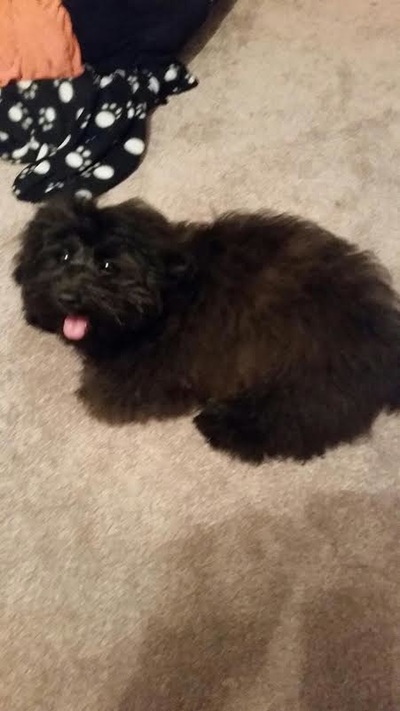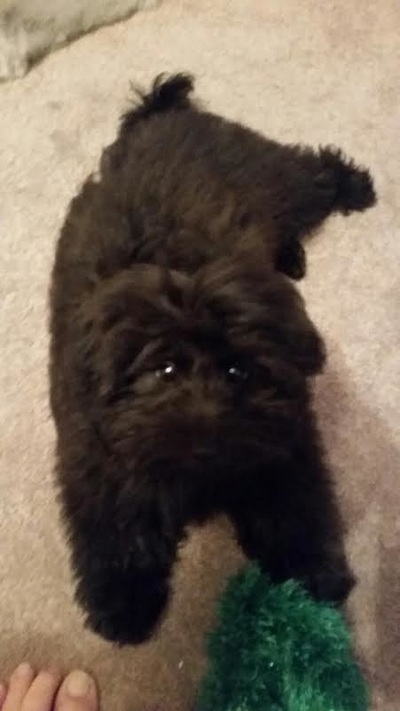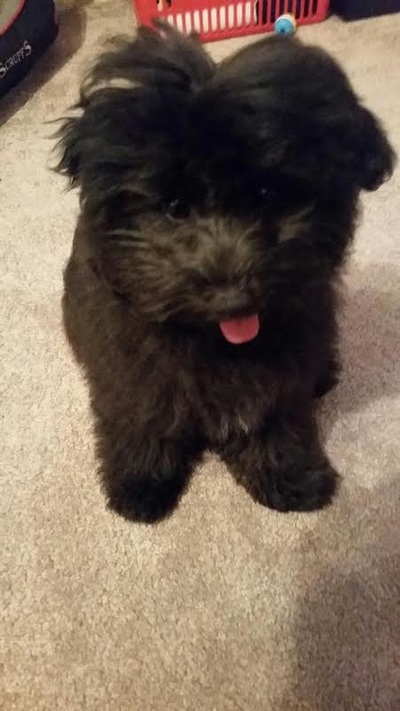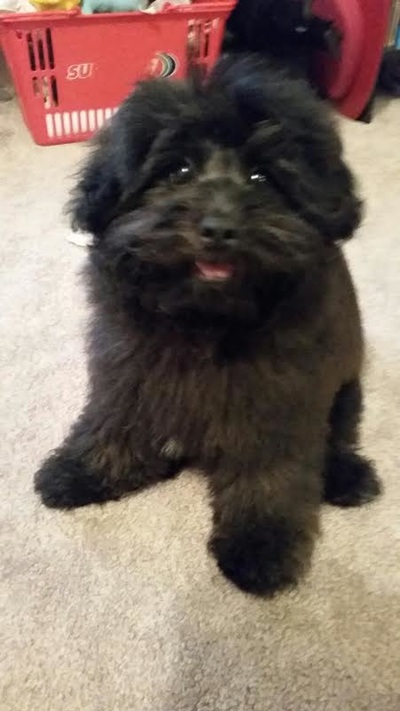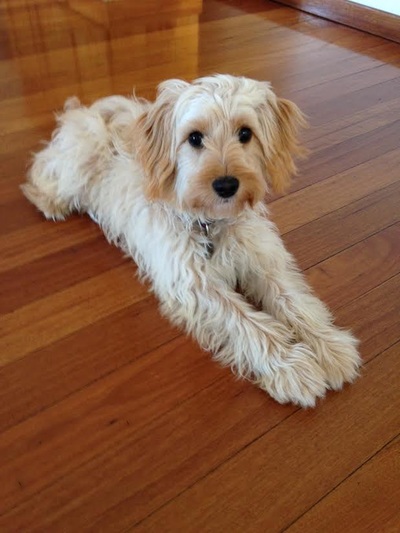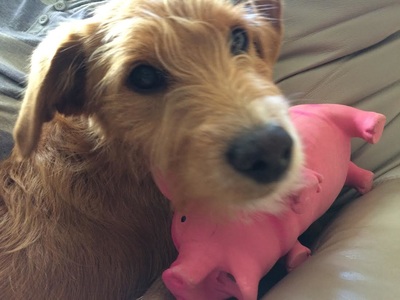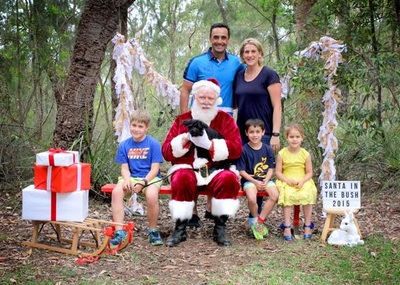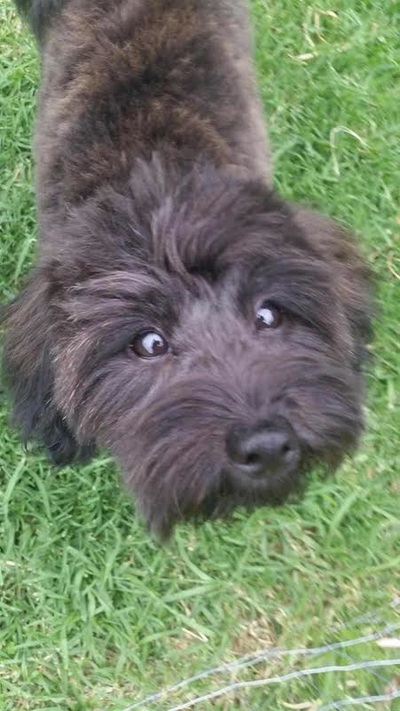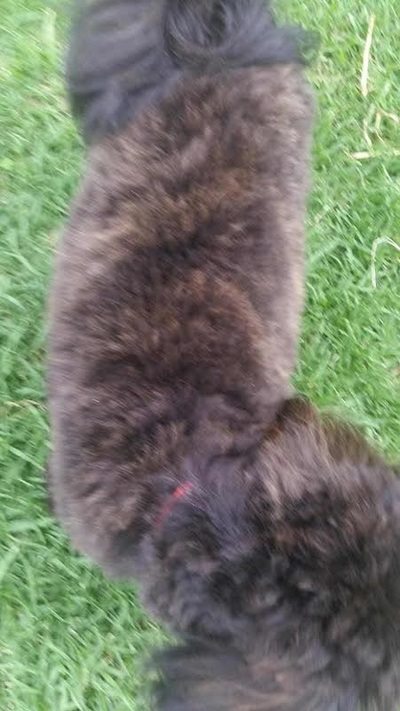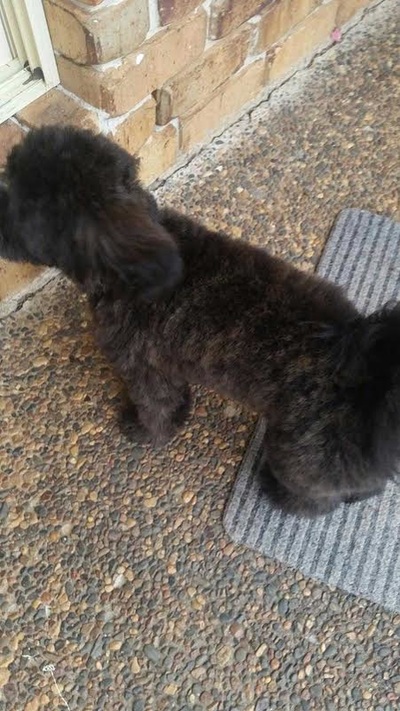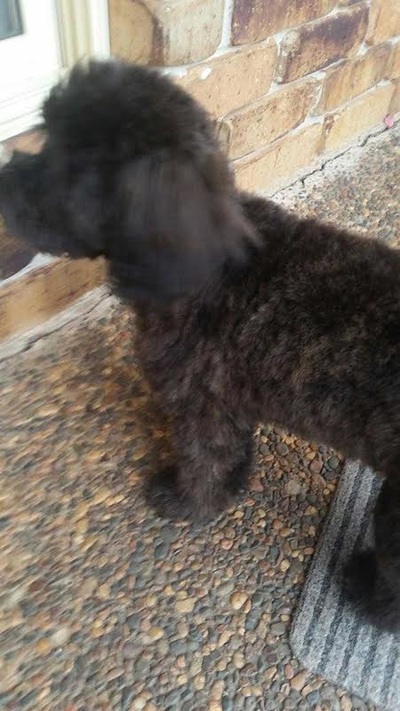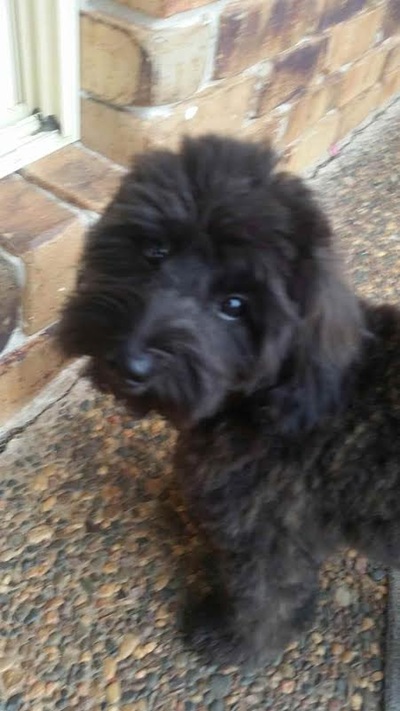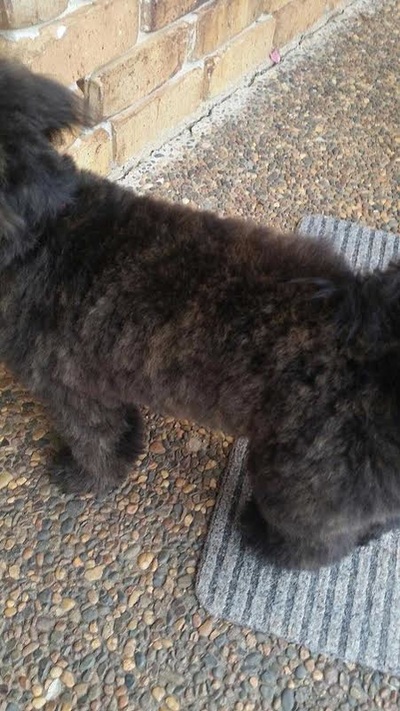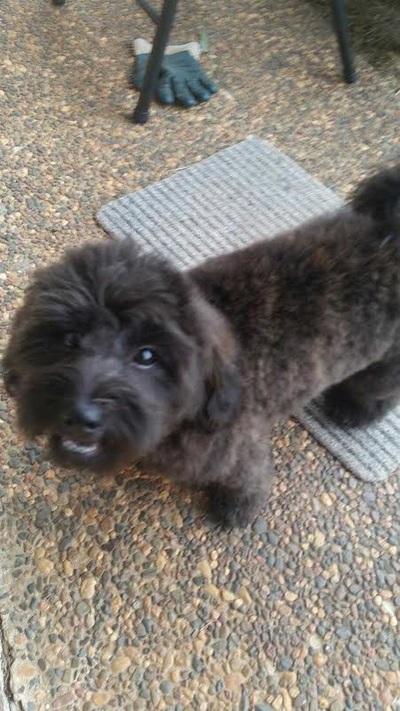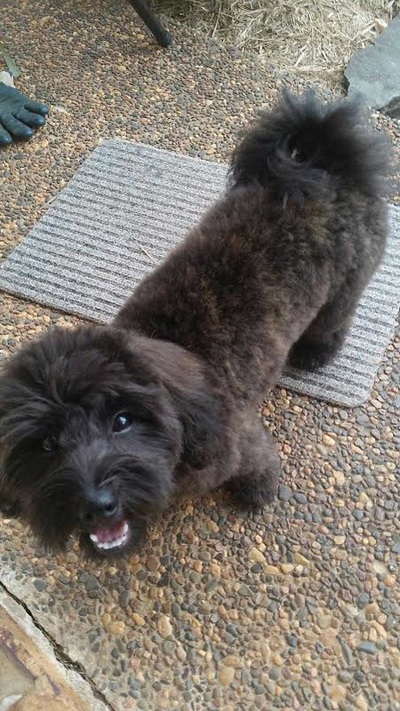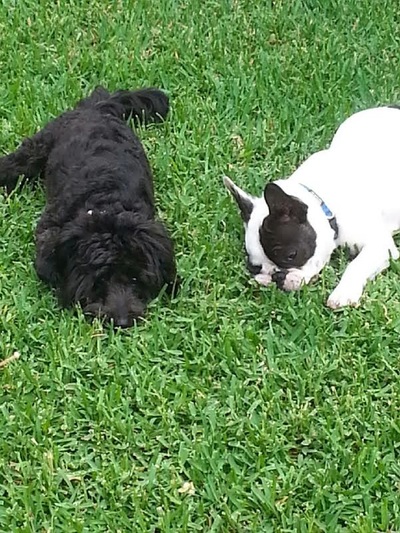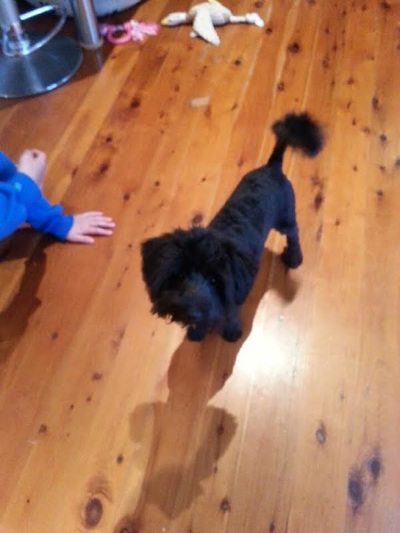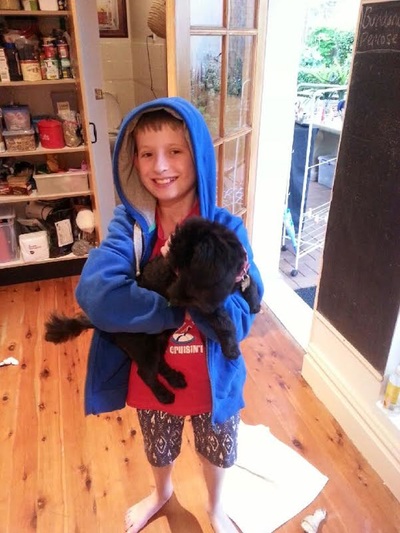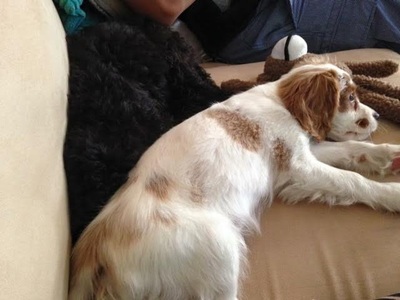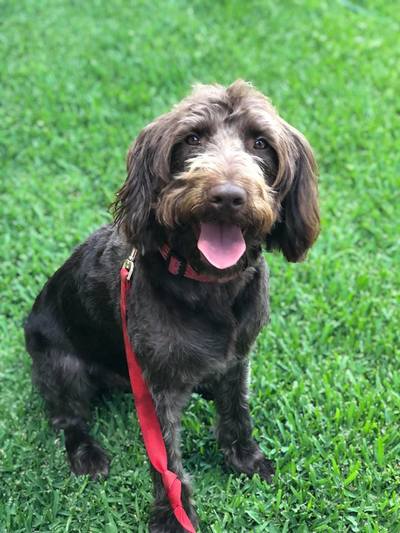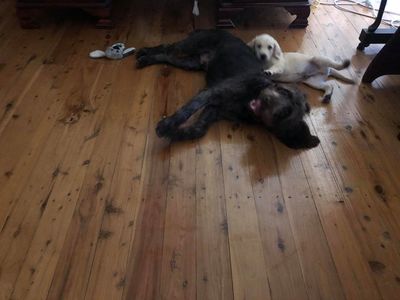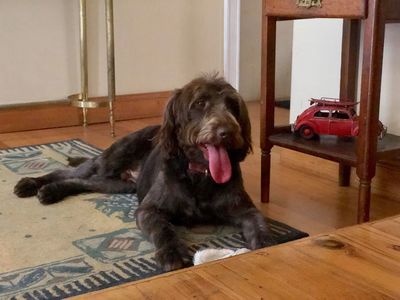Labradoodle
Scroll Below for photos of our previous Labradoodles in their family homes.
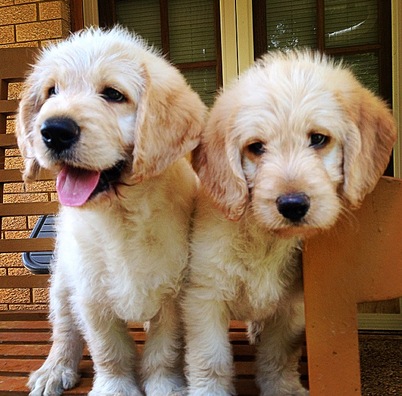 Jake & George
Jake & George
Breed: Labradoodle (Labrador Retreiver x Poodle)
Temperament: Intelligent, affectionate and playful
Approx. Size:
Standard
Height: 60 – 80 cm at the withers
Weight: 20 - 35 kg
Mini
Height: 38 - 55 cm at the withers
Weight: 8 - 18kg
Lifespan: 10-12 years
Maintenance: Medium
Recommended for: families, kids, singles, more active elderly couples
Temperament: Intelligent, affectionate and playful
Approx. Size:
Standard
Height: 60 – 80 cm at the withers
Weight: 20 - 35 kg
Mini
Height: 38 - 55 cm at the withers
Weight: 8 - 18kg
Lifespan: 10-12 years
Maintenance: Medium
Recommended for: families, kids, singles, more active elderly couples
What is a 'Labradoodle'?
The Labradoodle was the first of all the 'Oodle cross breeds' to become known. The Labradoodle is the cross between a Labrador Retriever and a Poodle. Labradoodles were initially bred using Standard Poodles, for the purpose of their breeding (see below for origins of the breed), though is now bred in other sizes as well - to suit those looking for a slightly smaller version of the dog. Many Labradoodles seen walking the streets today are multigeneration, meaning both their parents were Labradoodles, as well as their parents, as well as their grandparents. Some Labradoodles go up to and beyond fifth generation. Many of these dogs are also back crosses, which refers to a Labradoodle that has been bred back to a Poodle (this increases the percentage of Poodle inherited, in the hopes of breeders achieving a more "Poodle type" coats). Even as twelfth generation back crosses, they are still considered to be Labradoodles, due to their ancestors heritage. See below for your typical Labrador - and three separate Poodle sizes. Labradoodles can range greatly in size. Mini and more often Standard Poodles are often used when breeding Labradoodles.
The Labradoodle was the first of all the 'Oodle cross breeds' to become known. The Labradoodle is the cross between a Labrador Retriever and a Poodle. Labradoodles were initially bred using Standard Poodles, for the purpose of their breeding (see below for origins of the breed), though is now bred in other sizes as well - to suit those looking for a slightly smaller version of the dog. Many Labradoodles seen walking the streets today are multigeneration, meaning both their parents were Labradoodles, as well as their parents, as well as their grandparents. Some Labradoodles go up to and beyond fifth generation. Many of these dogs are also back crosses, which refers to a Labradoodle that has been bred back to a Poodle (this increases the percentage of Poodle inherited, in the hopes of breeders achieving a more "Poodle type" coats). Even as twelfth generation back crosses, they are still considered to be Labradoodles, due to their ancestors heritage. See below for your typical Labrador - and three separate Poodle sizes. Labradoodles can range greatly in size. Mini and more often Standard Poodles are often used when breeding Labradoodles.
Origin of the Labradoodle
The Labradoodle is accountable for cross bred dogs (previously referred to as mutts), being rebranded as a designer dog; and viewed as a breed of their own. The Labradoodle allowed for non-pedigree dogs to be seen in a new light. The first pups to be referred to as 'Labradoodles' were no mistake, and were purpose bred puppies - with the intention of being raised as guide dogs.
A lady from Hawaii with impaired sight, had contacted breeders here in Australia, in the 1980's, who required a guide dog - however, this guide dog was to be non-shedding, as her husband had allergies. It was initially thought the Standard Poodle would be a great candidate, they are both non-shedding, and a working dog. There were several trials over the years (to be exact, 33 Standard Poodles - were trained and trialled, over a course of three years) and they all failed as a guide dog. This is when the decision was made to cross the Standard Poodle with the Labrador Retriever, hoping to achieve the trainability of the Labrador, with the non-shedding qualities of the Poodle.
There were 3 puppies born in the litter, who needed temporary homes to be raised in, to be socialised, to be trained. None of the families wanted to foster the puppies, they weren't pure bred, and they weren't traditionally a guide dog. Finding suitable candidates to look after the puppies was difficult. The breeder came up with the name 'Labradoodle', after his attempts at finding somewhere for his Labrador x Poodle puppies had failed. They decided to take to the press, with this new dog - The Labradoodle! This rebranding, gained worldwide attention. Nobody wanted these cross bred dogs, now all of a sudden there were hundreds of families lining up, to look after these Labradoodle puppies. Out of the 3 puppies, 2 maintained non-shedding qualities, and grew to become successful guide dogs, and so the Labradoodle was born.
Personality, characteristics and temperament
The Labradoodle is an intelligent, playful and affectionate dog - that makes more than just a great guide dog - but is an excellent family pet. Docile and easy going like the Labrador, this dog gets along well with children and is a real gentle giant. Smart and inquisitive like the Poodle, allows for an eager and willing to please canine. The Labradoodle is a very bright and happy pet, that enjoys company (whether it be human, or another dog), and is most content when by your side.
Affectionate and loving, the Labradoodle is more than willing to lay up on the lounge, watch TV and cuddle for the night. Both the Labrador and the Poodle have been bred as water dogs, and the Labradoodle is no different to its parents, if given the option they will enjoy swimming in the pool or runs along the beach. Exercise is important, allow your Labradoodle to be the energetic and active dog it can be, by going for walks, and teaching ettiquette for off leash dog parks (fairly straight forward with the friendly and social Labradoodle). The Labradoodle is also an ideal candidate for agility sports, and activities such as dock dogs (this is where dogs run up off a platform/pontoon - and jump into the water to retrieve a toy. Whoever jumps the furthest will be awarded the most points, and competitions are held throughout the country).
The gentle nature of the Labradoodle, with its potential to do just about anything, has allowed for it to become one of Australia's most loved dogs. Family friendly, and sociable with other dogs and animals, Labradoodles enjoy to play, and meet people and make new friends when they are out and about. Both indoor/outdoor dogs, the Labradoodle is suitable for small and large backyards. Though they can make good apartment dogs, daily walks will be required for toilet breaks and to stretch those legs!
This is an adaptable and adjustable breed, that suits quiet and calm kids, just as much as louder and more out going children. Labradoodle puppies are very sweet and happy, and a Labradoodle puppy will display that excitement by hopping and bouncing around! Adult Labradoodles are more than comfortable to spend the day sleeping, whilst waiting for their family to return home.
Grooming your Labradoodle
The amount of grooming required for a Labradoodle will depend on the type of coat. Labradoodles that have been clipped or have a shorter coat will require brushing less regularly, than those with full length coats. Most Labradoodles will require general facial trimming for maintenance. Bath no more than once a month, and use a puppy perfume for in between washes. Over use of shampoos can strip your dogs coat of natural bodily oils, and cause skin irritations. Make sure you dry your dogs ears well after a bath, and keep them clean to avoid ear infections.
Training your Labradoodle
We recommend Puppy Preschool for all our puppies, this allows for early socialisation with other dogs in a safe environment, and you will learn the things you need to know when owning a dog, and your pooch can start their basic obedience training. Even if you're not a first time dog owner, puppy preschool will be beneficial for you and your dog. Labradoodles inherit intelligence from both their parents, and are very food driven. This makes training fun and easy, but be sure to use positive reinforcement in conjunction with your food rewards. Eager and willing to please, training Labradoodles can be a lot of fun. Start with puppy preschool, before advancing on to adolescent training classes, if you wish to enter agility trials and dock dog competitions.
The Labradoodle is accountable for cross bred dogs (previously referred to as mutts), being rebranded as a designer dog; and viewed as a breed of their own. The Labradoodle allowed for non-pedigree dogs to be seen in a new light. The first pups to be referred to as 'Labradoodles' were no mistake, and were purpose bred puppies - with the intention of being raised as guide dogs.
A lady from Hawaii with impaired sight, had contacted breeders here in Australia, in the 1980's, who required a guide dog - however, this guide dog was to be non-shedding, as her husband had allergies. It was initially thought the Standard Poodle would be a great candidate, they are both non-shedding, and a working dog. There were several trials over the years (to be exact, 33 Standard Poodles - were trained and trialled, over a course of three years) and they all failed as a guide dog. This is when the decision was made to cross the Standard Poodle with the Labrador Retriever, hoping to achieve the trainability of the Labrador, with the non-shedding qualities of the Poodle.
There were 3 puppies born in the litter, who needed temporary homes to be raised in, to be socialised, to be trained. None of the families wanted to foster the puppies, they weren't pure bred, and they weren't traditionally a guide dog. Finding suitable candidates to look after the puppies was difficult. The breeder came up with the name 'Labradoodle', after his attempts at finding somewhere for his Labrador x Poodle puppies had failed. They decided to take to the press, with this new dog - The Labradoodle! This rebranding, gained worldwide attention. Nobody wanted these cross bred dogs, now all of a sudden there were hundreds of families lining up, to look after these Labradoodle puppies. Out of the 3 puppies, 2 maintained non-shedding qualities, and grew to become successful guide dogs, and so the Labradoodle was born.
Personality, characteristics and temperament
The Labradoodle is an intelligent, playful and affectionate dog - that makes more than just a great guide dog - but is an excellent family pet. Docile and easy going like the Labrador, this dog gets along well with children and is a real gentle giant. Smart and inquisitive like the Poodle, allows for an eager and willing to please canine. The Labradoodle is a very bright and happy pet, that enjoys company (whether it be human, or another dog), and is most content when by your side.
Affectionate and loving, the Labradoodle is more than willing to lay up on the lounge, watch TV and cuddle for the night. Both the Labrador and the Poodle have been bred as water dogs, and the Labradoodle is no different to its parents, if given the option they will enjoy swimming in the pool or runs along the beach. Exercise is important, allow your Labradoodle to be the energetic and active dog it can be, by going for walks, and teaching ettiquette for off leash dog parks (fairly straight forward with the friendly and social Labradoodle). The Labradoodle is also an ideal candidate for agility sports, and activities such as dock dogs (this is where dogs run up off a platform/pontoon - and jump into the water to retrieve a toy. Whoever jumps the furthest will be awarded the most points, and competitions are held throughout the country).
The gentle nature of the Labradoodle, with its potential to do just about anything, has allowed for it to become one of Australia's most loved dogs. Family friendly, and sociable with other dogs and animals, Labradoodles enjoy to play, and meet people and make new friends when they are out and about. Both indoor/outdoor dogs, the Labradoodle is suitable for small and large backyards. Though they can make good apartment dogs, daily walks will be required for toilet breaks and to stretch those legs!
This is an adaptable and adjustable breed, that suits quiet and calm kids, just as much as louder and more out going children. Labradoodle puppies are very sweet and happy, and a Labradoodle puppy will display that excitement by hopping and bouncing around! Adult Labradoodles are more than comfortable to spend the day sleeping, whilst waiting for their family to return home.
Grooming your Labradoodle
The amount of grooming required for a Labradoodle will depend on the type of coat. Labradoodles that have been clipped or have a shorter coat will require brushing less regularly, than those with full length coats. Most Labradoodles will require general facial trimming for maintenance. Bath no more than once a month, and use a puppy perfume for in between washes. Over use of shampoos can strip your dogs coat of natural bodily oils, and cause skin irritations. Make sure you dry your dogs ears well after a bath, and keep them clean to avoid ear infections.
Training your Labradoodle
We recommend Puppy Preschool for all our puppies, this allows for early socialisation with other dogs in a safe environment, and you will learn the things you need to know when owning a dog, and your pooch can start their basic obedience training. Even if you're not a first time dog owner, puppy preschool will be beneficial for you and your dog. Labradoodles inherit intelligence from both their parents, and are very food driven. This makes training fun and easy, but be sure to use positive reinforcement in conjunction with your food rewards. Eager and willing to please, training Labradoodles can be a lot of fun. Start with puppy preschool, before advancing on to adolescent training classes, if you wish to enter agility trials and dock dog competitions.
